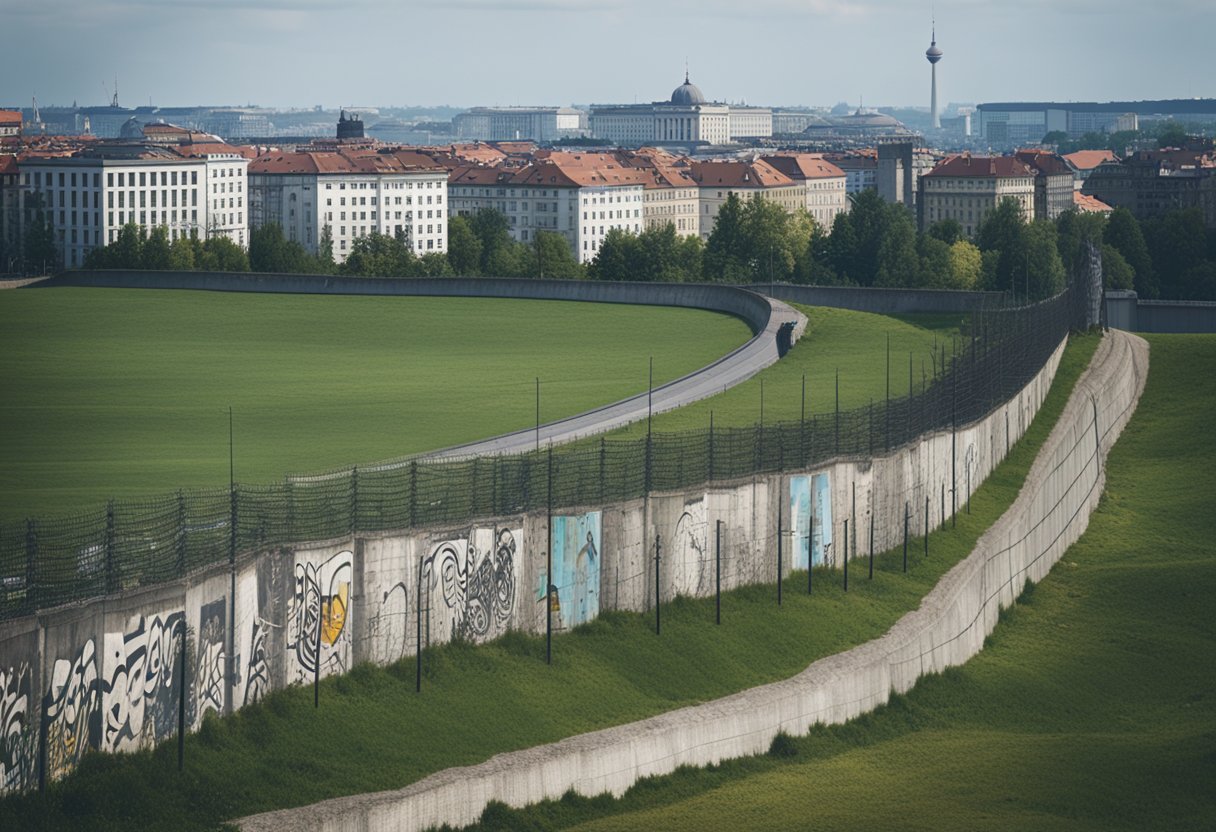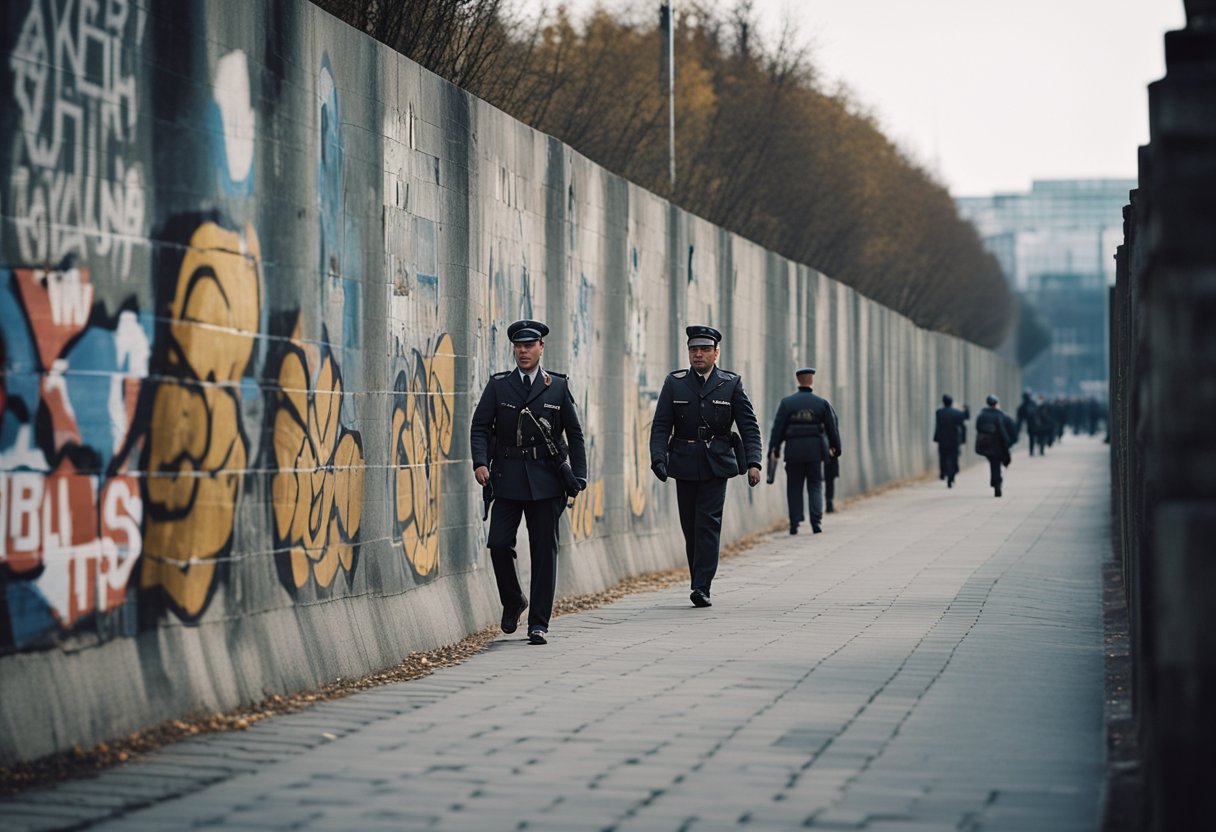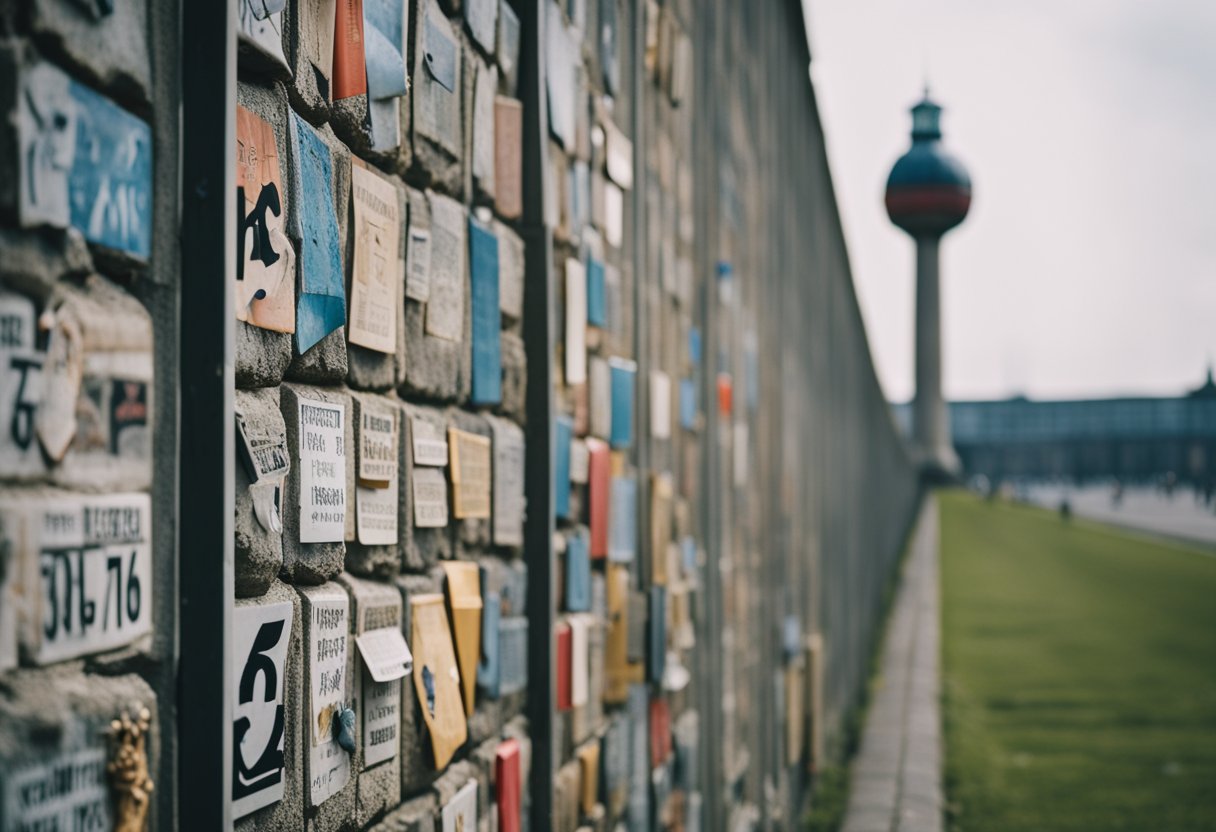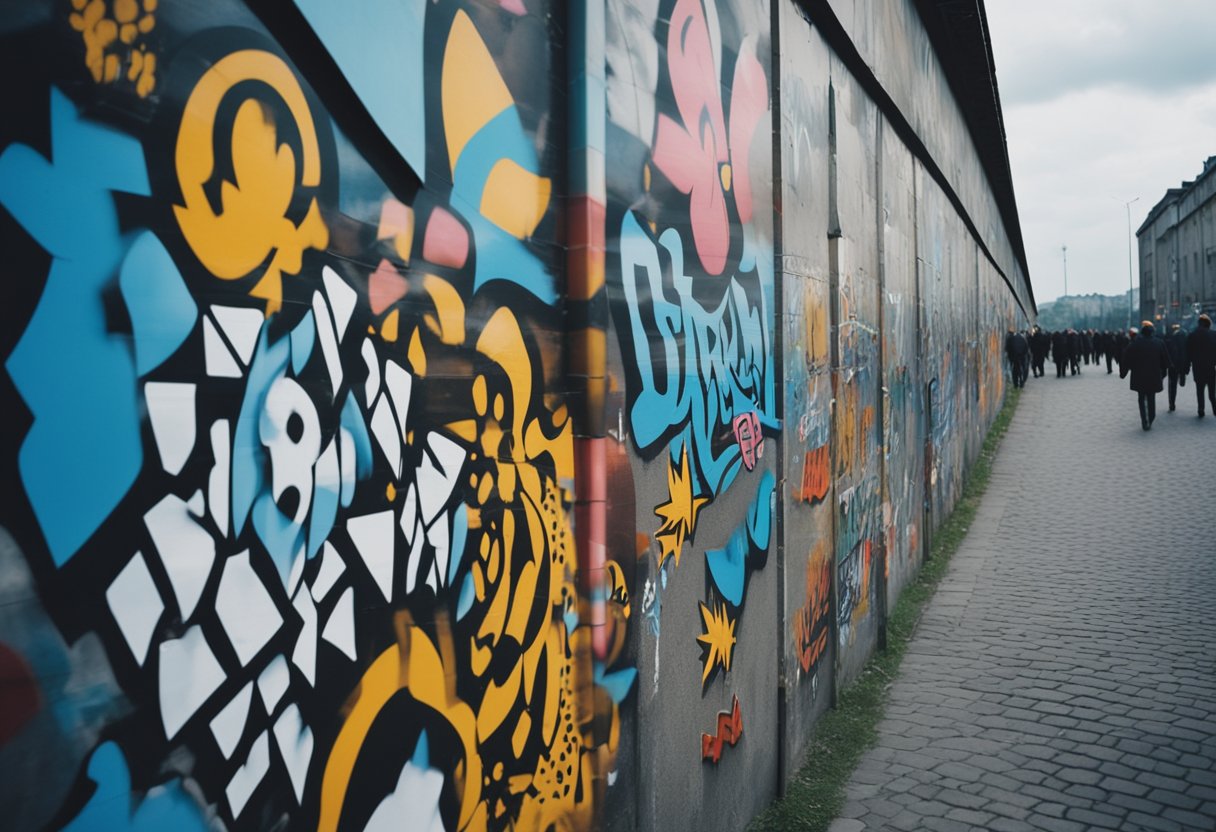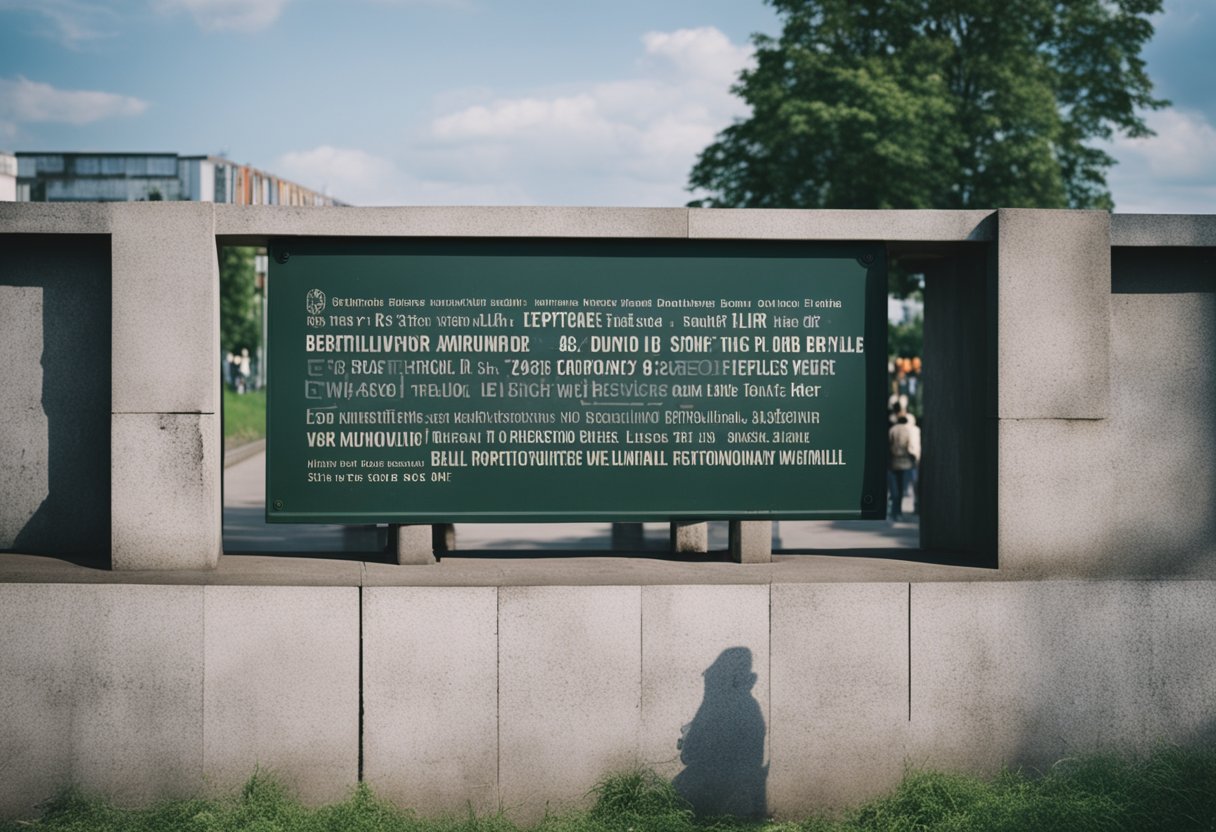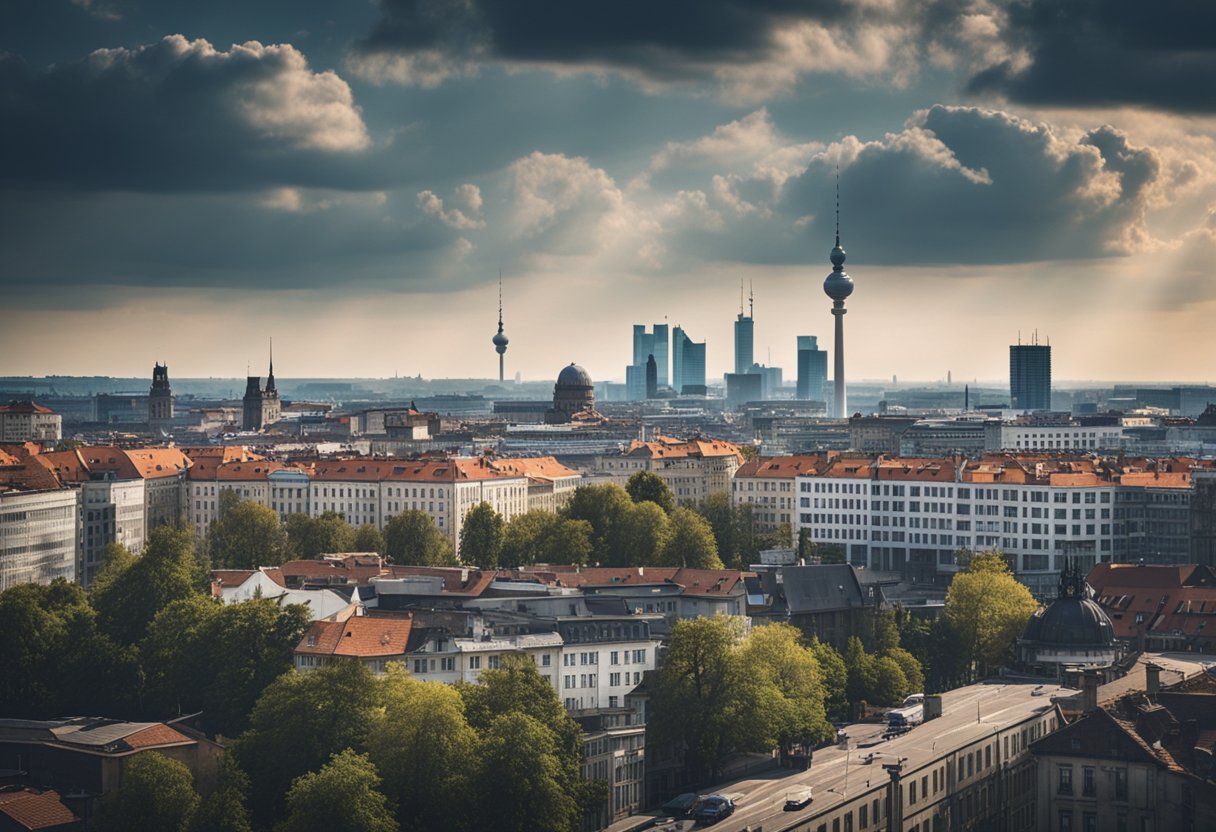Visitors to Germany often inquire about the Berlin Wall in Germany, the monumental barrier that once divided East and West Berlin from 1961 until its fall in 1989.
While the majority of the Wall has been dismantled, its memory continues to echo throughout Berlin. Remnants of the Wall still exist, and these have been preserved as historical monuments, serving as a tangible reminder of the past.
Sites such as the East Side Gallery showcase the longest surviving stretch of the Wall, turned into an expansive outdoor gallery, displaying artworks that symbolize hopes for freedom and commemorate the struggles of an earlier time.
For those interested in the Cold War era and the impact of the Berlin Wall, there are several locations within Berlin where segments of the Wall can be observed.
These preserved sections offer a glimpse into the stark division that the Wall represented. The Berlin Wall Memorial on Bernauer Strasse, for instance, provides an extensive outdoor exhibition detailing the history of division, escape attempts, and the Wall’s eventual downfall.
It is a compelling destination for anyone looking to understand the gravity of the Berlin Wall’s presence in Germany.
Aside from the physical remnants, numerous museums and informational sites are dedicated to presenting the wider historical context of the Wall.
The Checkpoint Charlie Museum and the Topography of Terror are among these informative sites, providing visitors with detailed accounts of the Wall’s role in German history.
Berlin has embraced its role as a guardian of history, ensuring that the narrative and significance of the Berlin Wall remain accessible to the world.
Historical Context of the Berlin Wall in Germany
The Berlin Wall was a powerful symbol of the Cold War, manifesting the ideological divide between East and West. Its construction began on August 13, 1961, as the German Democratic Republic (GDR), or East Germany, erected the Wall to prevent its citizens from fleeing to West Germany.
Initially, the Wall was just a barbed wire fence, but it eventually solidified into a 3.6-meter-high concrete barrier. It stretched over 140 kilometers, encircling West Berlin and cutting through the city, effectively making Berlin a city divided.
Referred to by the East German government as the “Anti-Fascist Protection Barrier,” the Wall was a stark representation of oppression, with numerous guarded watchtowers and anti-vehicle trenches. At least 140 people died trying to escape over the Wall.
Despite the separation, the desire for reunification and democracy intensified. The peaceful revolution in East Germany set the scene for the historic event on November 9, 1989, when the Wall fell.
This pivotal moment marked the beginning of Germany’s reunification process, which concluded on October 3, 1990, effectively ending the division of East and West Germany.
Today, remnants of the Wall still exist, serving as a reminder of the past, and some sections have been preserved for historical and memorial purposes, allowing visitors to witness this significant piece of history firsthand.
Remaining Segments and Memorials
While the Berlin Wall largely vanished after its fall in 1989, there are still a number of sites around Berlin where visitors can see fragments of the wall, as well as memorials and museums dedicated to preserving the memory and significance of this former symbol of division.
East Side Gallery
This open-air gallery is the longest remaining section of the Berlin Wall, showcasing over 100 murals by graffiti artists. Spanning 1.3 kilometers along the Mühlenstraße, it stands as a colorful testament to freedom.
Berlin Wall Memorial and Documentation Center
Located on Bernauer Straße, the Berlin Wall Memorial includes the remains of the Wall, an open-air exhibition, and a visitor center that tells the stories of those affected by Germany’s division.
Checkpoint Charlie
A symbol of the Cold War, Checkpoint Charlie was the crossing point between East and West Berlin. Now, it hosts a museum and is a point of interest for visitors seeking to understand Cold War tensions.
MauerPark
This park is not only a green oasis but also a cultural venue with a bustling flea market and open-air karaoke happening on Sundays. MauerPark was once part of the death strip and has been transformed into a lively community space.
Potsdamer Platz and Niederkirchnerstraße
Potsdamer Platz, once a bustling square, was bisected by the Wall and fell into desolation. Near it, along Niederkirchnerstraße, lies the Topography of Terror, an exhibition located where former Nazi SS and Gestapo buildings once stood, next to remnants of the Wall.
Bornholmer Straße and Bösebrücke
At Bornholmer Straße, visitors can find the Bornholmer Straße border crossing, where one of the first breaches in the Wall occurred on November 9, 1989. Bösebrücke, the bridge adjacent to it, offers a historical context to the monumental events of that day.
Watchtowers and Death Strip Remnants
A few watchtowers, like the Schlesischer Busch watchtower, still stand in Berlin as grim reminders of the Wall’s oppressive surveillance. The area known as the death strip is most discernible in the park am Nordbahnhof.
Additional Remnants and Infrastructures
Sections of the Wall and related infrastructure can also be found in less frequented locations such as the Flutgraben channel near Treptow, and along Puschkinallee/Schlesischer Busch, where parts of the Wall and an old watchtower mark the former East-West divide.
Footprints of the Wall
Across Berlin, a route is marked by cobblestones tracing the Wall’s former path. The Berliner Mauerweg, a walking and cycling path, follows the footprint of the historic barrier, providing an immersive journey through the city’s divided past.
Cultural Significance and Art Installations
The Berlin Wall, once a symbol of division, now stands as a poignant testament to freedom. Visitors to Berlin can indeed witness remnants of this historical barrier and reflect on its significance. Notably, the East Side Gallery showcases the world’s largest open-air mural collection on a preserved section of the Wall.
One of the iconic murals at the East Side Gallery is “The Fraternal Kiss” by Russian artist Dimitri Vrubel. This artwork captures a Soviet leader kissing his East German counterpart, exemplifying political satire and the transformative power of art.
Art installations pepper the city, with some at original locations of the Berlin Wall, serving as reminders of past separations and current liberties. The Mauerpark, once a part of the death strip, now hosts vibrant flea markets and cultural events, exhibiting Berlin’s adaptability and creative spirit.
Tourists can explore these historical sites, such as the Sonnenallee border crossing, now marked by art installations that ponder proximity and distance. These works prompt introspection on the human experience of segregation and the joy of reunification.
In essence, the wall segments still standing in Berlin demonstrate the resilience of freedom and the city’s dedication to remembering history through art and communal spaces. They are freely accessible, allowing anyone to visit and experience this significant part of German history.
Tourism and Education
The Berlin Wall stands not only as a historical landmark but also serves as a focal point for tourism and education in the German capital. It provides visitors with a tangible link to the past and ample opportunities to learn about the events that shaped modern Germany.
Visitors Centers and Opening Hours
The Berlin Wall Foundation operates visitor centers offering detailed insights into the history of the Wall. The opening hours vary by location, typically from 10:00 am to 6:00 pm, allowing flexibility for visitors. Major sites like Checkpoint Charlie have their own visitors centers, enriching the experience with extensive resources.
Permanent and Temporary Exhibitions
At the East Side Gallery, visitors can explore a permanent exhibition of art on the longest-surviving Wall section. Temporary exhibitions often occur at the Berlin Wall Memorial, incorporating artifacts, photographs, and stories that convey the impact of the Wall on people’s lives.
Museums and Educational Centers
Berlin is home to several museums and educational centers that focus on the Berlin Wall and its broader historical context.
The Wall Museum offers a comprehensive overview, while the DDR Museum enables visitors to dive into life in East Germany. The Palace of Tears, once a former border crossing point, and the Asisi Panorama deliver poignant educational experiences about the city’s division.
Berlin Today: Integrating Past and Present
Berlin, the German capital, is a city deeply interwoven with its history, notably the division that once segregated its citizens.
Despite the physical dismantlement of the Berlin Wall, the remnants are still visible and have become a poignant testament to the era of the German Democratic Republic and the division of East and West Berlin.
Public Transport plays an integral role in merging the city’s once divided halves. Historically, the division necessitated the creation of “ghost stations,” which were no longer in use as trains passed through without stopping at stations cut off by the Wall.
Following reunification, these stations like Nordbahnhof, once silent, have been revived, emphasizing connection and accessibility.
Visitors can witness history preserved at specific sites where the Wall remains standing. The East Side Gallery—the longest surviving section—displays murals of hope and reflects on the period of separation.
| Location | Significance |
|---|---|
| East Side Gallery | Open-air mural exhibition on the former Wall |
| Checkpoint Charlie | Iconic crossing point and museum |
While much of the Wall has been removed, its trace is marked throughout the city by metal plates, creating a symbolic border where the Wall once loomed. On anniversary occasions, the path of the former barrier is illuminated, integrating the past within the vibrant fabric of today’s Berlin.
For those enquiring, “Can you see the Berlin Wall in Germany?”, the answer is affirmative. The Berlin Wall stands as a stark reminder of past divisions, yet its reduction to mere segments serves as a tangible reflection of Berlin’s journey towards reunification and the city’s ongoing story of integration.
Frequently Asked Questions
Exploring the history and remnants of the Berlin Wall is a journey many visitors in Germany take. Knowing where and how to see this historic monument is essential.
Where is the best place to observe the Berlin Wall today?
The longest surviving stretch of the Berlin Wall can be observed at the East Side Gallery, an open-air gallery where murals adorn the remnants, capturing the spirit of transformation and freedom.
Are there specific sections of the Berlin Wall still standing for public viewing?
Yes, sections like the East Side Gallery and Checkpoint Charlie remain standing, and the area surrounding Bernauer Straße is preserved as a memorial site with significant portions of the Wall still visible for public viewing.
Which museums or memorials provide information about the history of the Berlin Wall?
The Berlin Wall Memorial, including the Documentation Center and Visitor Center, provides a comprehensive understanding of the Wall’s history, along with Checkpoint Charlie Museum and the East Side Gallery.
How long did the Berlin Wall stand before it was dismantled?
The Berlin Wall stood as the city’s divisive barrier from its construction in 1961 until its fall in 1989, a period spanning nearly 28 years.
Why was the Berlin Wall erected in the first place?
The Berlin Wall was built to prevent East Germans from fleeing to the West, symbolizing the broader divide between the communist and capitalist blocs during the Cold War.
Can visitors see the Berlin Wall during evening or nighttime hours?
While parts of the Berlin Wall like the East Side Gallery are accessible at night, for safety and lighting reasons, the best viewing experience is during the daytime when all facilities, such as visitor centers and documentation centers, are open.
